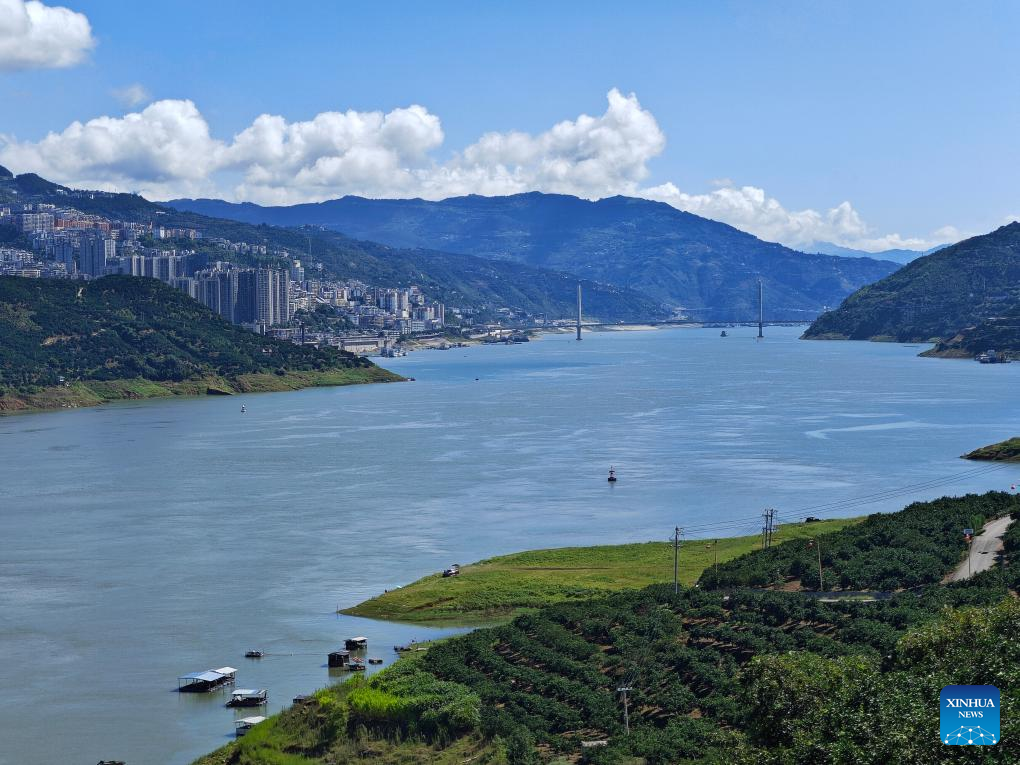Protect mother rivers to safeguard water security


Editor's Note: Several rivers in China have run dry and lakes have shrunk due to the combined impact of human activities and climate change. As a result, ecological challenges have become prominent and water security faces new risks. Yu Qiyang, director of the Department of Water Resources Management of the Ministry of Water Resources, spoke to Fengmian News about the initiative launched in 2022 to protect many mother rivers in the country. Below are excerpts from the interview. The views don't necessarily represent those of China Daily.
The relationship between people, rivers and lakes in China has become increasingly strained in recent years. In some areas, there is an acute lack of understanding of natural and economic laws and not enough consideration for water resources and ecological conditions. Development has not always taken water availability into account, leading to dried up river channels, shrinking lakes and new challenges to water security.
To address these issues, the Ministry of Water Resources is focusing on major problems such as river interruptions and lake shrinkage. Three years ago it implemented an initiative to protect rivers, which involved targeted policies to resolve the difficult challenges of river and lake ecological management. Among the 88 mother rivers and lakes included in the initiative, 74 rivers had achieved full connectivity by the end of 2024, five rivers saw an extension in both the length and duration of water flow and the water level was effectively maintained in nine lakes.
Water resources are unevenly distributed in China, with some regions receiving a relatively scarce supply. To strike a balance between ecological restoration and the water demand for economic and social development, there should be harmonized water use for living, production and ecological purposes.
The ministry has worked to clarify initial water rights, strictly control water exploitation and strengthen water use management to curb wastage. At the same time, efforts are being made to enhance efficiency in the use of water resources. This will ensure that the limited water supply supports both ecological protection and high-quality development.
Going forward, the Ministry of Water Resources will continue to make ecological protection and governance of rivers and lakes a top priority. It has a four-point strategy to ensure that the initiative to protect mother rivers yields good results.
The first goal is to revive all 88 designated mother rivers and lakes. The ministry will guide local authorities to implement action plans river by river and lake by lake. This includes strengthening ecological flow management, enhancing unified water resource scheduling, advancing connectivity of river-lake systems, upgrading hydrological monitoring and strengthening the oversight of water resources.
The second step is to summarize experiences from the initiative and build replicable models of water ecological protection and restoration. Technical standards will be developed, improving the overall standards system for river-lake governance and laying the groundwork for broader implementation.
Third, institutional and legal safeguards will be strengthened. The ministry will fully leverage mechanisms to enhance unified planning, governance, dispatch and management. The water rights trading system will be further improved, and legislative revisions will be advanced to modernize governance capacity. Remote sensing, big data and other digital technologies will be increasingly applied for scientific evaluation of outcomes.
The fourth step involves expanding the scope of the initiative nationwide. Local governments at the prefecture level will conduct thorough inspections of river and lake conditions, prepare updated catalogs and design three-year implementation plans. Tailored protection and governance programs will be formulated to scale up the initiative across the country.


































